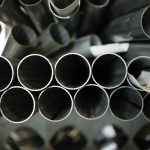Gas cylinders power many daily tasks but pose serious hazards if mishandled. Understanding key safety steps—not just general advice—can prevent accidents and protect lives. From verifying cylinder certification to spotting dangerous leaks and complying with regulations, mastering practical precautions ensures confident, secure use. This guide highlights essential tips that go beyond basics to help you manage gas cylinders responsibly and safely every time.
Immediate safety precautions for gas cylinder handling
Before beginning any task involving handling gas cylinders, taking immediate safety precautions is crucial to prevent accidents. First, always perform a thorough inspection of the cylinder. Check the gas cylinder safety labels for clear indications of the contents, hazards, and handling instructions. Verifying that the cylinder’s certification is valid and that it is not expired ensures it remains fit for use. An expired or uncertified cylinder increases the risk of leaks or explosions.
Topic to read : The hidden dangers of gas cylinders you need to know
Personal protective equipment (PPE) is another essential aspect of handling gas cylinders safely. At minimum, users should wear gloves resistant to chemicals and impact, safety goggles to protect eyes from potential gas leaks or splashes, and steel-toed boots to guard feet against heavy cylinders. Being properly equipped reduces injuries from mishandling or unexpected releases of gas.
Additionally, ensure you have a well-ventilated working area free from ignition sources. This setup minimizes risks linked to accidental gas leaks. Preparing the immediate working environment and verifying the cylinder’s details all contribute toward comprehensive gas cylinder safety. Implement these safety tips consistently to reduce hazards each time you handle gas cylinders.
In the same genre : What role does artificial intelligence play in UK business growth?
Proper storage methods for gas cylinders
Ensuring safety through correct storage practices
Proper gas cylinder storage is crucial to prevent accidents and maintain safety in any environment where gases are used. The first step in storing gas cylinders safely is choosing the right location. Cylinders should be stored in a well-ventilated, dry, and cool area, sheltered from direct sunlight and extreme temperatures. Ideally, storage locations must be away from any sources of ignition such as open flames, sparks, or electrical equipment. Maintaining safe distances reduces the risk of fire or explosion.
When considering correct storage, cylinders must be arranged upright and secured individually using chains, straps, or racks. This prevents them from falling or being tampered with, which could lead to leaks or damage. Avoid stacking cylinders unless they are specifically designed for stacking and have proper securing measures. Organisation is key; separate different types of gases (flammable, oxidising, inert) to avoid dangerous reactions in case of leaks.
To summarize critical considerations for safe gas cylinder storage:
- Store cylinders upright on level ground, secured to prevent tipping
- Keep cylinders well-ventilated and away from ignition sources
- Organise by gas type and avoid stacking unless safe to do so
These measures uphold the highest standards of safety and minimize risks associated with mishandling or improper storage of gas cylinders. For deeper insights on the hidden dangers related to gas cylinder mishandling, you can Click to learn more.
Safe operation and usage practices
When using gas cylinders, strict adherence to safe usage practices is essential to prevent accidents and ensure smooth cylinder operation. Before connecting a gas cylinder, always inspect the cylinder for any visible damage or corrosion. Ensure the valve is tightly closed before attaching a regulator, and use the correct tools and fittings designed for the specific gas type.
Proper procedure requires opening cylinder valves slowly to avoid sudden pressure surges that can damage equipment or cause leaks. When disconnecting, close the valve fully, bleed off residual gas from the regulator, and remove connections carefully. This method minimizes exposure to hazardous gases and reduces risk.
Checking for leaks is another critical step in cylinder operation. Use soapy water or approved leak detection solutions on valves, regulators, and connection points. Bubbles will indicate leaks, signaling the need for immediate corrective action. Never rely on smell alone, as some gases are odorless and highly dangerous.
For safe movement and transportation within premises, always secure cylinders upright with appropriate straps or holders and handle them using cylinder carts or trolleys. Avoid dragging or rolling cylinders on their sides, as this risks damage to valves and potential leaks. Follow established routes and keep cylinders away from heat sources or ignition points to enhance overall safety.
By consistently applying these safe usage practices, risks associated with gas cylinder handling are significantly reduced, providing a safer environment for all personnel involved. Click to learn more.
Routine maintenance and inspection
Regular gas cylinder inspection is essential to ensure safety and optimal performance. Visual inspections should be done frequently, typically before each use, to detect any external damage or corrosion. These regular checkups help identify issues early, reducing the risk of leaks or explosions.
During a visual inspection, look for dents, rust, cracks, or any signs of deformation on the cylinder surface. Pay close attention to the valve area, as malfunction here can be dangerous. Warning signs such as unusual odors, hissing sounds, or difficulty in opening the valve indicate a need for immediate professional attention.
When damage or malfunction is suspected, cylinder maintenance must follow approved processes. Repairs should only be conducted by qualified technicians using authorized equipment to maintain safety standards. Improper servicing can compromise the integrity of the cylinder, leading to potentially hazardous situations.
Routine maintenance and inspection are not merely formalities but crucial steps in gas cylinder safety management. Incorporating scheduled inspections and professional servicing prolongs the lifespan of cylinders while protecting users from hidden dangers. Click to learn more.
Leak detection and emergency response
Detecting a gas leak early is crucial in preventing serious harm during gas cylinder emergencies. One of the most common indicators is the distinct smell of gas, often described as a rotten egg odor added to odorless gases for safety. Additionally, a hissing or whistling sound near the cylinder or connected piping can signify a leak. For more precise identification, gas leak detection kits are available; these often include chemical sprays or electronic sensors that change color or beep upon detecting combustible gases.
If you suspect a gas leak, the first priority is safety: immediately shut off the gas supply if it can be done safely, avoid using any electrical devices or open flames, and ventilate the area by opening windows and doors. Do not attempt to locate the leak by smell alone, as prolonged exposure can be hazardous. Evacuate all occupants to a safe distance and call emergency services immediately.
Effective emergency response during gas cylinder emergencies requires knowing whom to contact and how to act quickly. Always have local emergency contacts accessible, including the fire department and gas supplier. Follow established evacuation protocols, which involve moving people upwind and away from the leak site. Training in these protocols can save lives and minimize damage. Click to learn more.
Regulatory compliance and authoritative guidance
Staying compliant with gas safety regulations is critical for preventing accidents and ensuring safe handling of gas cylinders. These regulations often vary by country and region but universally stress the importance of correct storage, transportation, and usage procedures. Adhering to local and national laws guarantees not only legal compliance but also the protection of lives and property.
Recognised safety bodies such as OSHA (Occupational Safety and Health Administration) in the United States and HSE (Health and Safety Executive) in the UK provide authoritative guidelines that set clear standards for gas safety. These organisations issue detailed requirements covering aspects like cylinder inspection intervals, leak detection, and emergency response protocols. Following their guidance ensures alignment with best practices and regulatory expectations.
Moreover, to maintain compliance with evolving gas safety regulations, ongoing safety training and certification are indispensable. Regular training updates enable staff to stay informed about the latest rules and safety innovations, reducing the risk of human error. Compliance is not static; it demands continuous education to uphold the highest safety standards. This proactive approach fosters a safer working environment and meets the stringent criteria set forth by authoritative safety sources.
Click to learn more.






